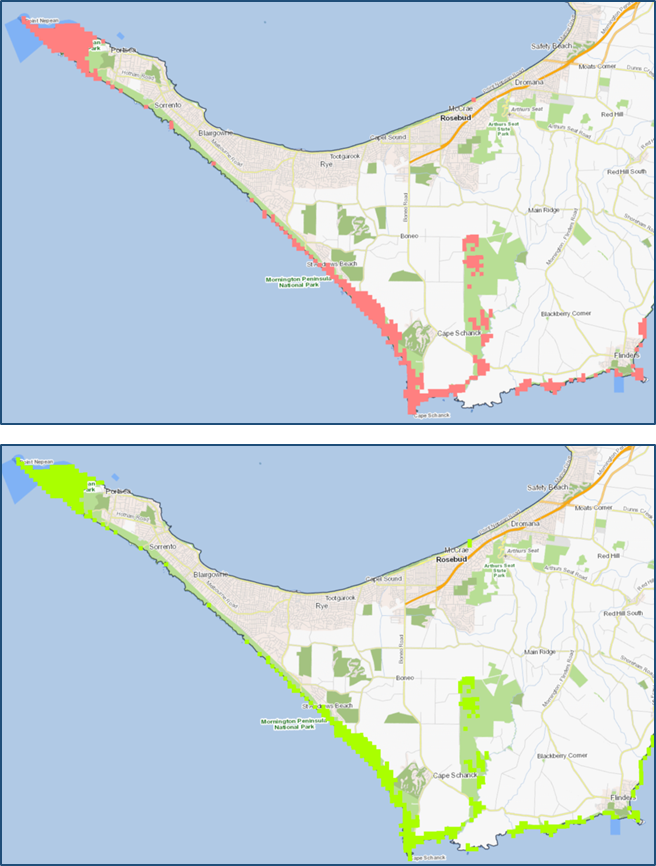Achieving biodiversity benefits in priority locations
Mornington Peninsula National Park (MPNP) and the adjoining Point Nepean National Park (PNNP) are a haven for native wildlife. Greens Bush in MPNP is the largest fragment of native bushland remaining on the Mornington Peninsula, while PNNP contains the largest area of threatened Coastal Moonah Woodland. This project will deliver strategic pest predator control across the adjoining national parks, including Greens Bush and expanding down the ocean coastline into Point Nepean. Control of feral cats and foxes will protect native fauna including threatened species- Hooded Plover, White-footed Dunnart, Swamp Skink, Long-nosed Bandicoot and Lewins Rail.
Over a decade of fauna monitoring using remote cameras has shown a significant decline in small mammal populations across the parks, and an increase in introduced predators. Sixteen Long-nosed Bandicoots have been found in the past year with evidence of predation (necropsy confirmation of cat and fox for a number of them).
This project has utilised Strategic Management Prospects (SMP) modelling to consider latest science and cost-benefit effectiveness aiming to maximise and enhance biodiversity benefits of the project within the landscape. Mornington Peninsula and Point Nepean National Parks are priority locations for controlling pest predators under Protecting Victoria’s Environment- Biodiversity 2037 (Bio2037), with a cost-benefit ranking in the top 20% for actions (cat & fox control) across the whole state.
This project has been identified as a high priority under the Western Port and South-East Melbourne Conservation Action Plan.

Themes and Local Areas
| Primary Theme: | Native Animals |
| Other Themes: | |
| Primary Local Area: | Mornington Peninsula |
| Other Local Areas: | |
| Project location: | Mornington Peninsula National Park (Greens Bush and Ocean Beaches) and Point Nepean National Park |
| Scale of the project: | Landscape |
| New or continuing work: | Continuing/building on previous work |
Project partners
| Lead organisation: | Parks Victoria |
| Key partners: | Birdlife Australia, Melbourne University (Wildlife Health Surveillance Victoria) |
| Registered Aboriginal Party/s relevant to the project or its area: | Bunurong Land Council Aboriginal Corporation |
Investment opportunities
| Opportunities for investors within this project start from: | $$ (Tensof thousands of dollars) |
| Estimated scale of investment for full project implementation: | $$$ (Hundreds of thousands of dollars) |
| Estimated timeframe for full project implementation: | 2-10 years |
Contribution toward targets
| Primary Regional Catchment Strategy target: | Mornington Peninsula National Park is 2,686 hectares and Point Nepean National Park is 560 hectares. The area has the ability to contribute to the RCS target for 120,000 hectares of sustained predator control in priority locations from 2017-2037. |
| Relevant Biodiversity 2037 goal: | Undertake pest predator control to protect native animal species in priority areas |
| Relevant National Landcare Program priority: | Priority species – Eastern Curlew, Orange-bellied Parrot and/or Hooded Plover – Trajectory improved |
More information
Western Port and South-east Melbourne Conservation Action Plan
https://www.environment.vic.gov.au/biodiversity/working-together-for-biodiversity


